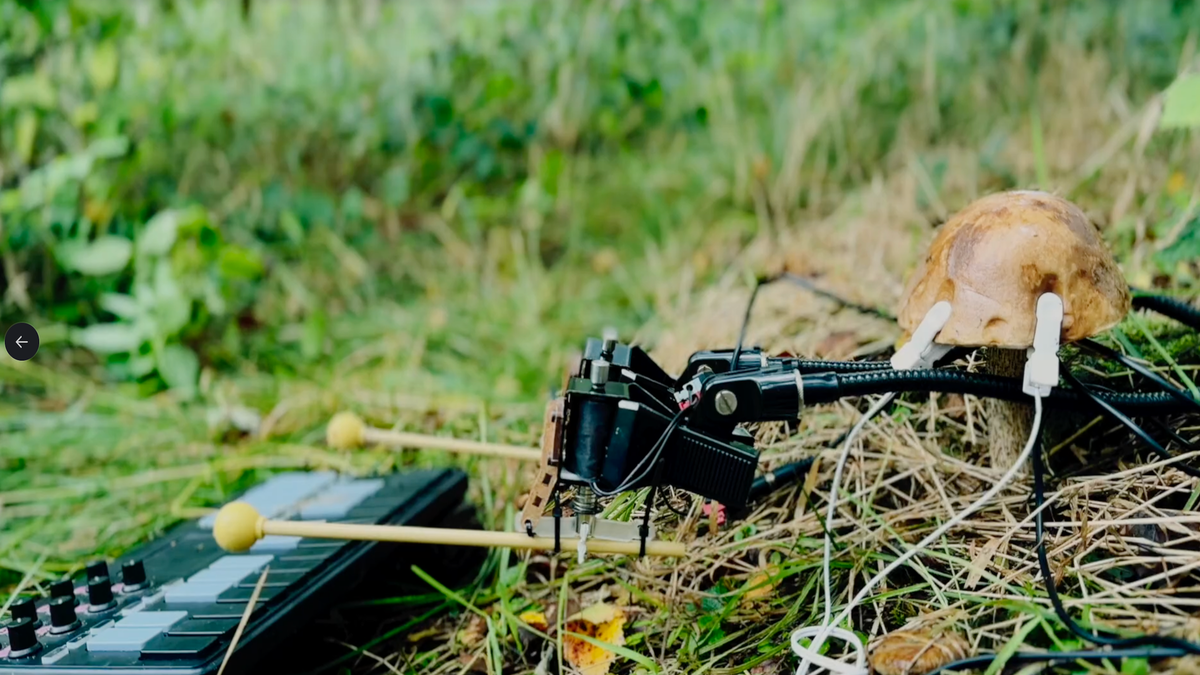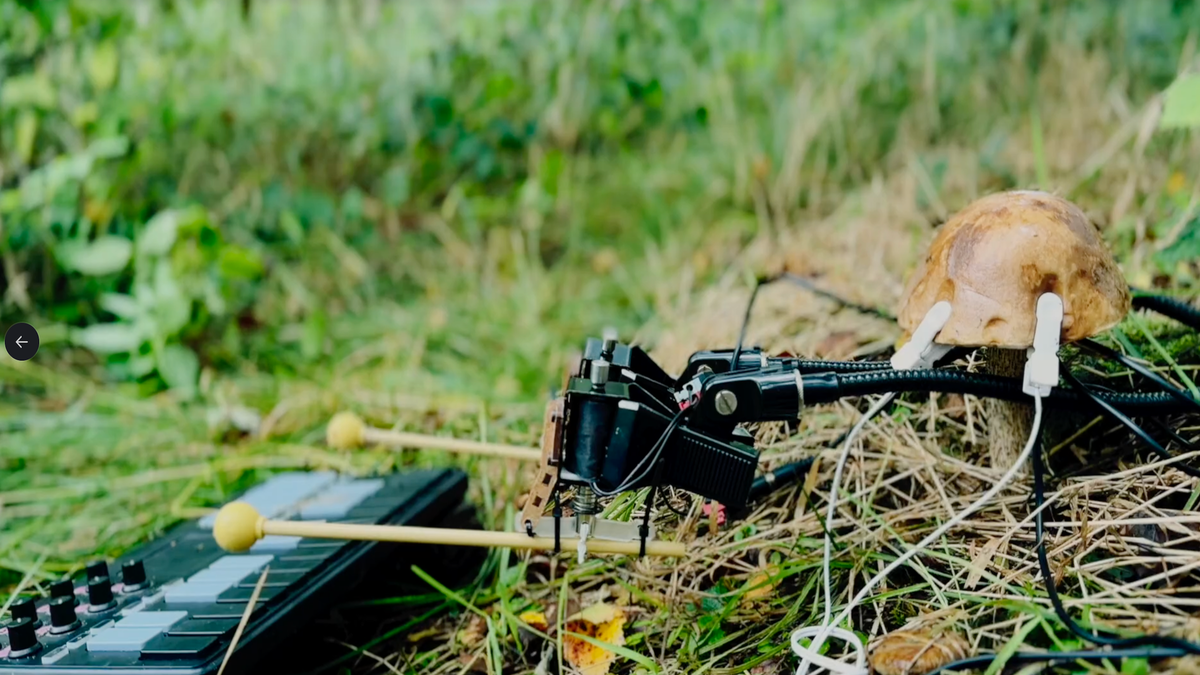
If the forest is alive with music, these scientists are turning up the amps. A British company called Bionic and the Wires is fusing technology with nature in its latest project, which involves affixing tiny robotic arms to clumps of mushrooms. The bioelectric currents created by the mushrooms power the tiny arms, which then play musical instruments.
Well, one instrument in particular: an MIDI keyboard and controller playing a synth on a laptop.
According to the Bionic and the Wires website, the project explores the intelligence and responsiveness of the natural world, challenging the traditional notion that art is “an exclusively human endeavor.”
To learn more about the project, Outside spoke with engineer Jon Ross of Bionic and the Wires for his take on musical-playing mushrooms.
OUTSIDE: First of all, how do the mushrooms make movements to “play” an instrument?
Jon Ross: All living organisms generate bio-electrical signals. Our equipment converts these signals into commands that control the bionic arms. We detect minute fluctuations in electrical conductivity across a mushroom or plant’s surface and convert this to movement. These signals are influenced by environmental factors like light, temperature, and humidity, which affect the mushroom or plant’s internal chemistry. We sonify a plant or mushroom’s “mood” rather than decoding a nervous system.
What is bioelectricity, and how does that translate to the mushroom moving drumsticks?
Plants and mushrooms, though seemingly silent and stationary, are far from passive. They both use electrical signals to communicate internally and respond to their environments—a phenomenon of surprising complexity that continues to fascinate researchers. Plants use electrical signals to coordinate responses to stimuli like touch, light, or predation. These signals come in forms such as action potentials (resembling animal nerve cells, though slower) and variation potentials (often linked with stress responses). Plants are far more sophisticated than previously imagined, possessing a wide range of cognitive abilities that blur the lines between plants and animals and challenge our understanding of what it means to be human.
Fungi, particularly mushrooms, also exhibit electrical activity. Recent studies have revealed spikes of electrical potential traveling through the mycelium, their underground network, which appear to play roles in resource allocation and environmental sensing. Some researchers even liken these patterns to primitive forms of information exchange.
What part is art, and what part is scientific?
We use scientific principles and technology to create our work, but we explore beyond science. Our art investigates plant and mushroom intelligence in a way that people can see and hear. The fact that mushrooms/plants exhibit creativity (a human trait) is particularly engaging for audiences. The hands/arms are also symbolic, associated with power. We challenge the anthropocentric view that humans are superior to nature, highlighting our interconnectedness. This art helps us understand our relationship with nature, and we identify ourselves as bio-artists.
Have you observed patterns in audio recordings? For example, do some species sound a certain way while others sound different?
Yes, there are differences in activity patterns among various species of plants and mushrooms. The amount of activity is dependent on environmental factors such as light, humidity, and temperature.
What inspires your work, and what do you hope to do next?
We are inspired by the emerging science around plant and music intelligence. We are hoping to collaborate with other musicians, artists and scientists. We have a few projects in the pipeline already, including an idea for a dance/ music performance. We’d like to ‘collaborate’ with other plants and mushrooms in other environments, too.
For more musical playing plants and animals, check out the Bionic and Wires YouTube page.
The post Scientists Found a Way to Make Mushrooms Play a Musical Instrument appeared first on Outside Online.














